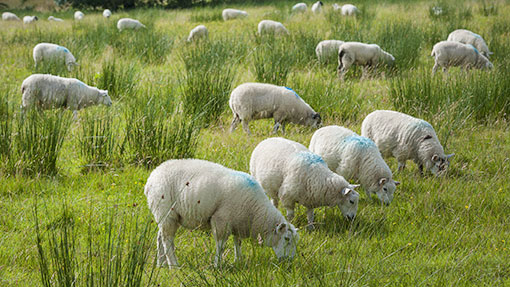Sheep farmers warned fluke risk has not gone away with drier weather

Sheep farmers should not become complacent about the risk of liver fluke this year, despite the fact the weather has been dry.
“It would be easy to take our eye off the ball because we have had a couple of weeks of nice weather,” said Dr Philip Skuce, senior research scientist from Moredun.
But fluke has not and will not go away, he warned.
See also: Bluefaced Leicester breed: One name, two sheep
He explained that, typically, the risk of an animal ingesting cysts was higher in the autumn, whereas chronic fluke risk peaked in the winter, when fluke develops into adults.
However, he said patterns were changing due to seasonality variations.
“It used to be an autumn issue, but it is now a year-round issue. You can’t assume it has gone away because we have had one fine summer,” he warned.
“The big imponderable is the over-wintering survivability of snails,” he added.
Farm vet Frances Jones, from Aeron Vets, Aberaeron, Ceredigion, stressed farmers needed to speak with their vet to ensure their treatment programme is right.
“Every farm is different and that is why everyone says consult your vet.
“[Farmers] are terrified of coming into the vets surgery and are convinced vets are going to fleece [them] of money,” she added.
However, establishing a good working relationship with your vet could help save money in the long-term, preventing unnecessary losses.
NSA Welsh region trustee Margaret Dalton, from west Wales, lost 120 lambs in 10 days as a result of triclabendazole resistance.
“We were drawing out lambs and within about a week we lost 120.”
Since then she has been working closely with Ms Jones to monitor fluke egg counts. She samples 25 animals a sheep group monthly, records body condition scores and liveweight gains and treats accordingly.
As a result, she has had no liver condemnations this year and lamb liveweight gains have improved. Yearling weights have also increased 5kg when lambing down.
Ms Jones said weighing sheep and faecal egg samples post-treatment is key to ensure product efficacy.
“It is extra work [weighing] but it is a very small amount of work for a huge pay off.”
She advised taking samples 21 days after treatment and recording losses accurately.
She added: “Be honest with yourself about losses you are encountering before you get to the point where you can’t stop losing things.”
